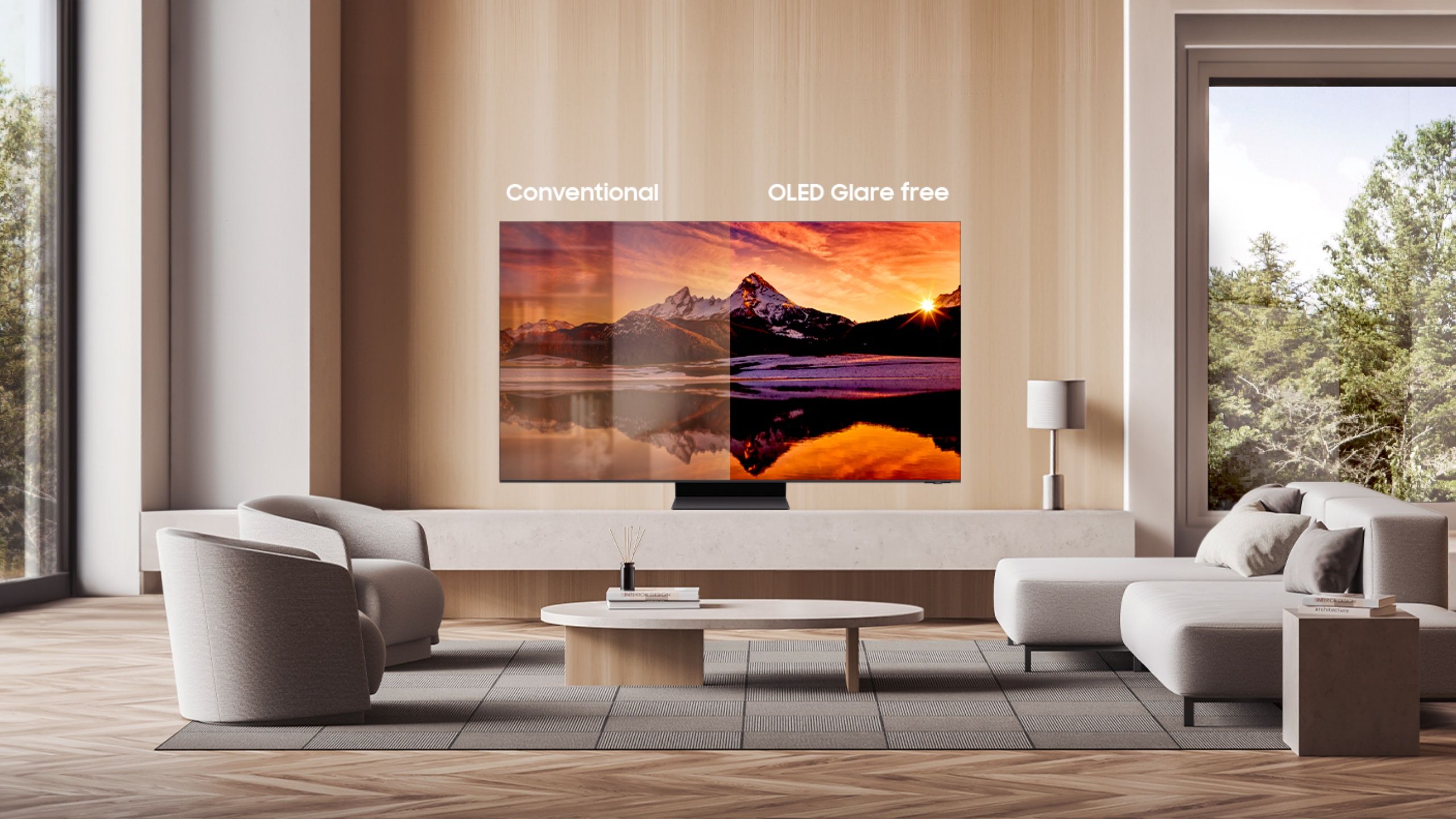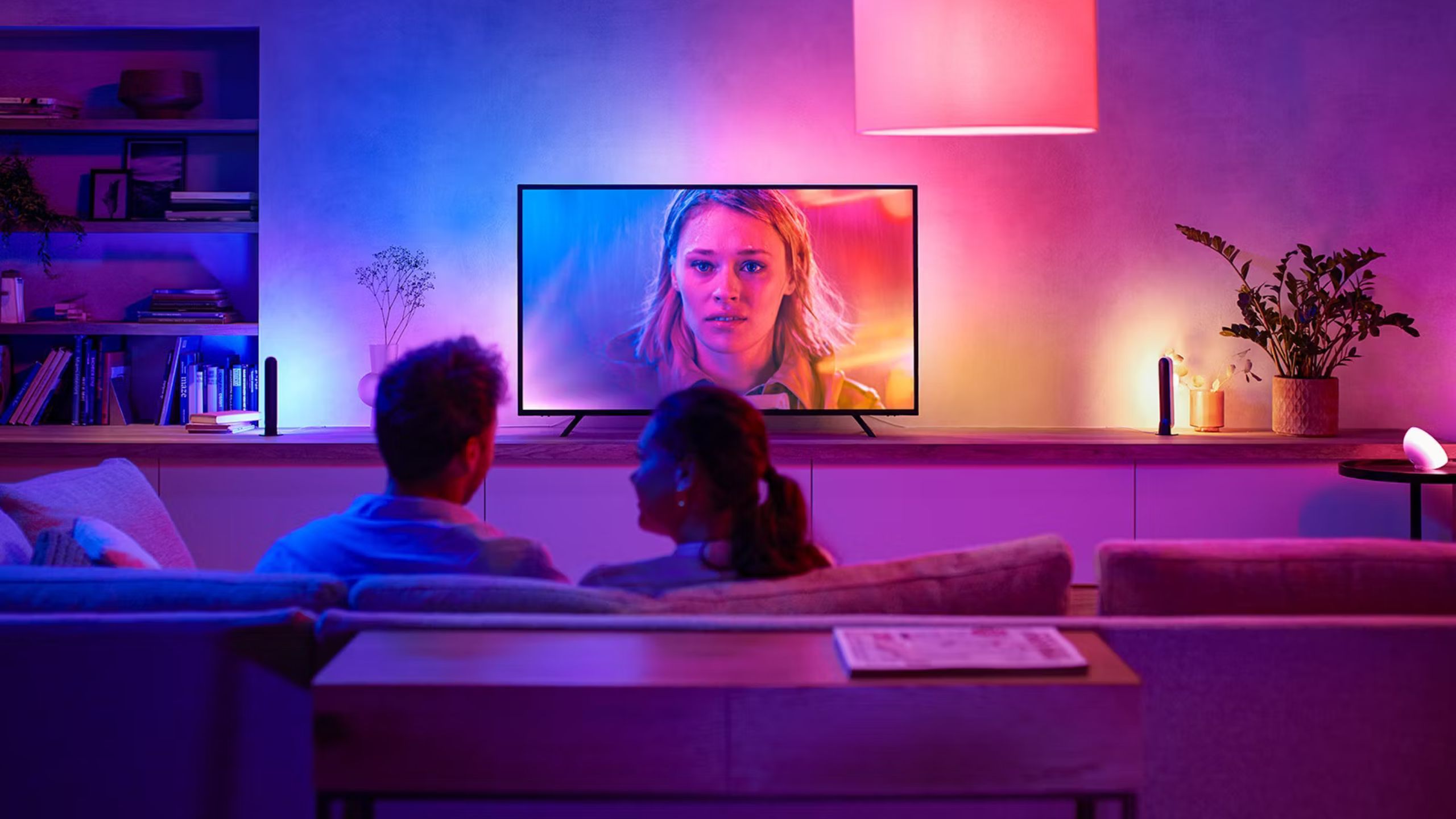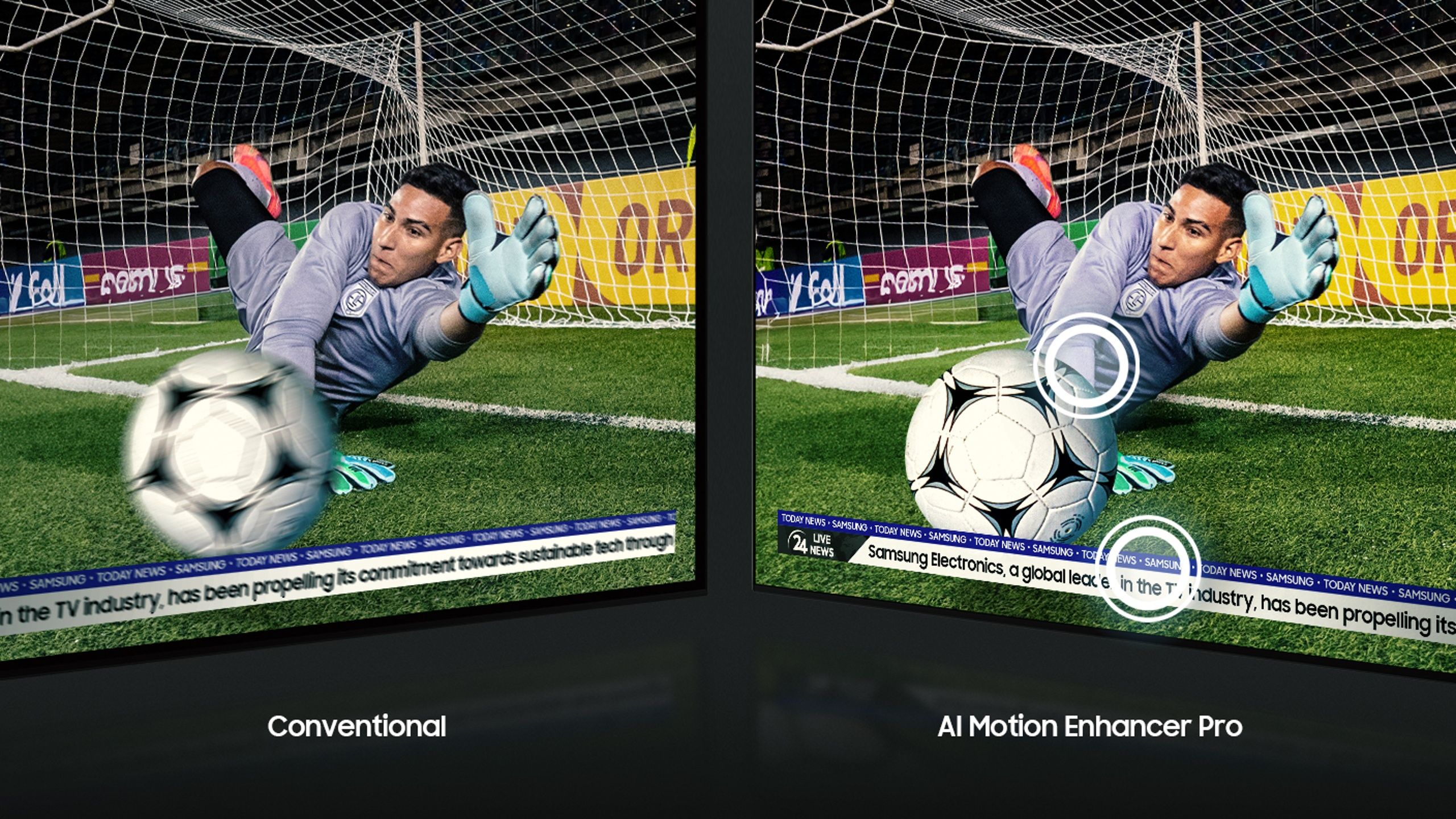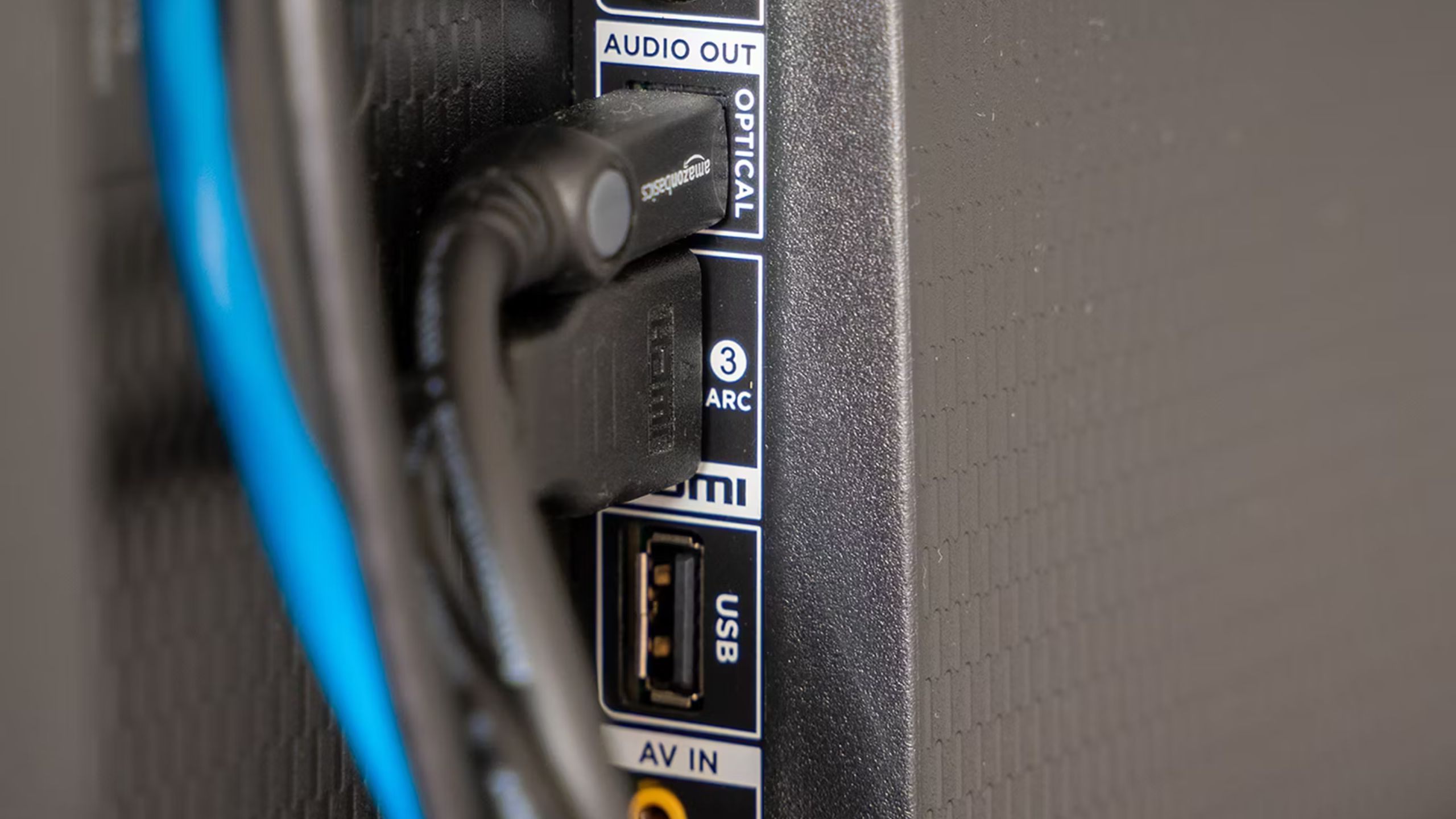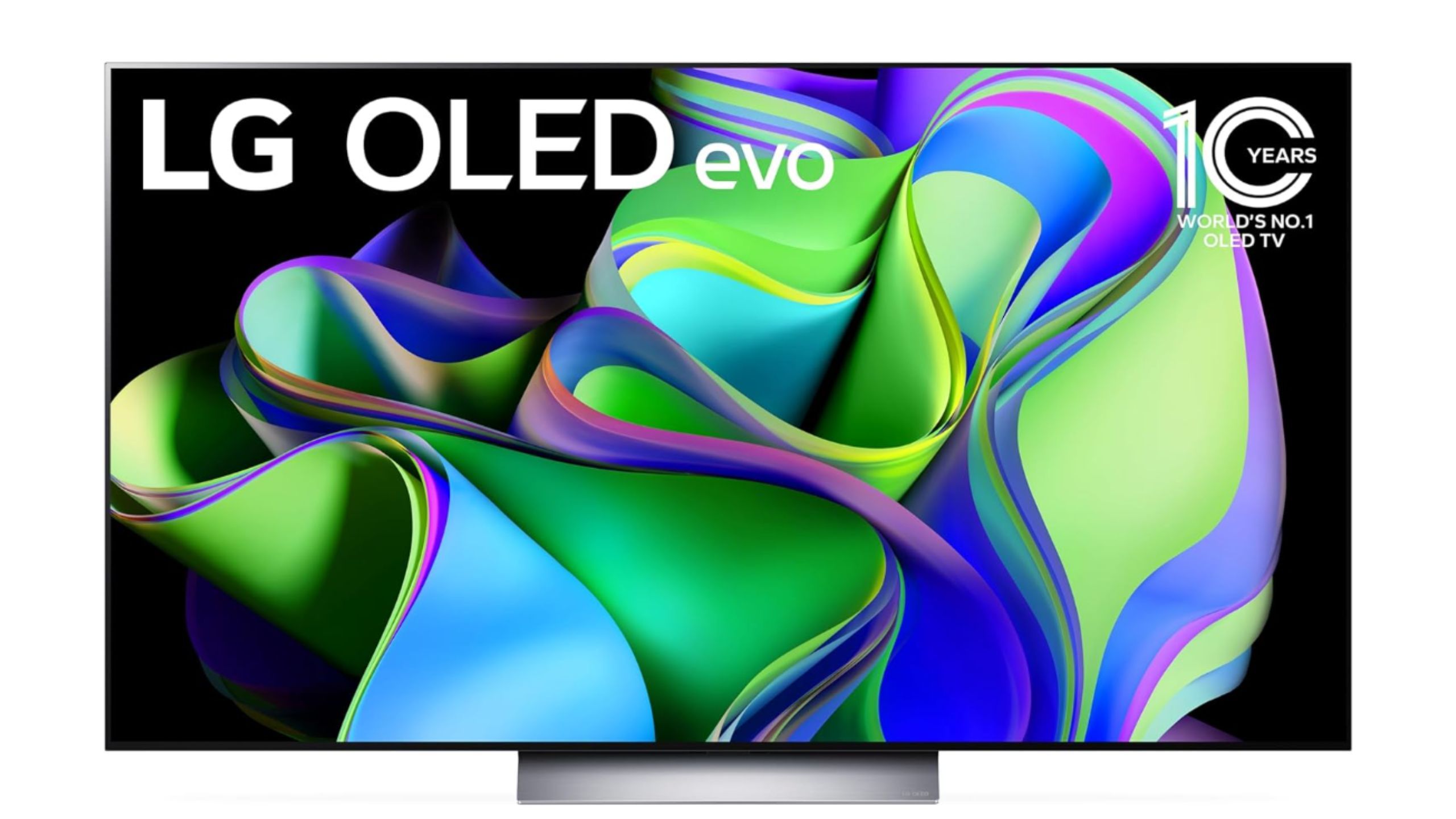Key Takeaways
- Avoid natural light to improve your viewing experience — content is made to be enjoyed in darkness.
- Use bias lighting to temper screen brightness, reduce eye strain, and add contrast for easier viewing.
- Consider investing in an OLED TV for the best contrast between dark colors and deep blacks.
In recent years, films and TV shows have gotten darker. Not just darker in tone, although we can thank Christopher Nolan and Zack Snyder for ushering in a wave of gritty content. But also literally darker, as in hard to see. Many of us were confused or annoyed at one Game of Thrones episode some years ago, but as we’ve seen with content like House of Dragon, The Batman, Yellowjackets, and any number of horror films, that GoT experience was not an anomaly. It was the beginning of TV’s Era of Darkness.
TV’s “Darkness Era” has been ushered in for a variety of reasons, most of which have to do with technological advances allowing creators to capture more detail in darkness.
That era has been ushered in for a variety of reasons, most of which have to do with technological advances allowing creators to capture more detail in darkness. Some filmmakers are seeking a specific dark vision, while other filmmakers may not quite be good enough to use the latest innovation in optimal ways. Also, the speed at which some content gets made means some quality is lost, and processing along the way can diminish contrast.
4 reasons to buy a Samsung TV over a Sony TV
An emphasis on brightness and beauty has me leaning toward Samsung.
There’s also a greater emphasis on cinematic quality, meaning some films and shows are meant for a theater-like experience, despite the fact that you may be watching at home on a sunny afternoon.
While the ‘why’ of it all may be interesting, what’s important is knowing how to fix the problem. Here are some tips and tricks you can do to improve the situation and a big investment you can make to completely alter your viewing experience.
1 Avoid outside light
Mimic a theater set up as much as possible
Samsung
The amount of sunlight coming into the room is a major influence on how much you enjoy the content on screen. Newer TVs like the Samsung QN90C are designed to accommodate viewing in lighter spaces with screens that reduce glare and reflections. Even if you have a high-end Smart TV, it’s important to make every possible effort to eliminate natural light from entering the room and hitting the TV.
Be mindful of where you are setting up your TV in relation to windows and invest in blackout curtains if you can’t avoid positioning the TV where light will find it. Keep in mind that so much content is made with the expectation that it will be viewed in a theater-like setting. So try to recreate that at home.
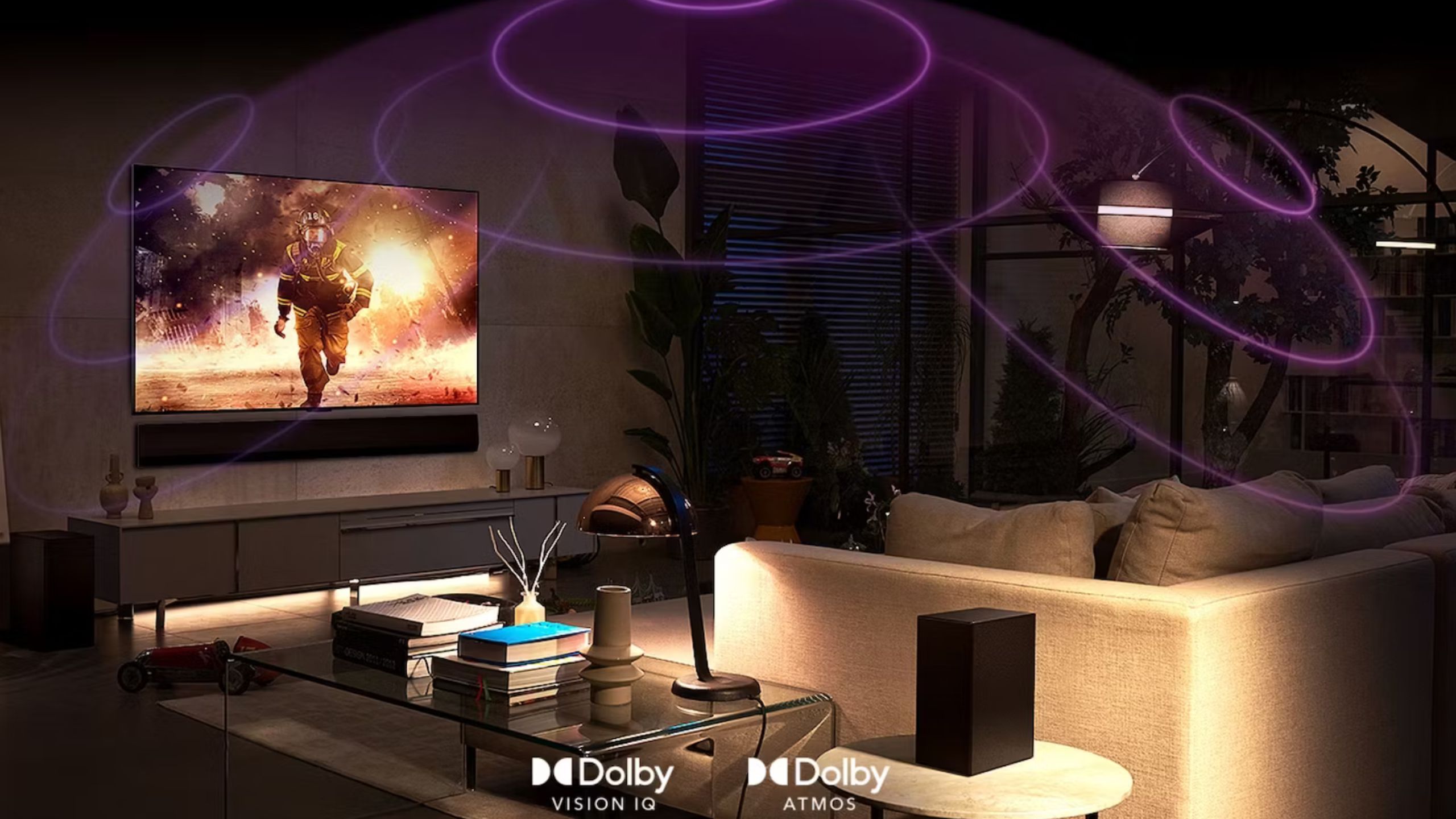
Does Dolby Atmos actually sound any better? Here’s what it can do
Dolby Atmos takes surround sound to another level and gives you cinematic sound from the comfort of your home.
2 But turn on some lighting inside
Creates more contrast and less strain
Philips
Bias lighting is a useful trick to influence contrast on screen when watching in the dark room we just created; it’s also a helpful way to avoid eye strain and potential headaches. Bias lighting has a way of tempering screen brightness, whether that’s a TV or computer monitor, acting as a sort of benchmark between the complete darkness that surrounds a shining screen. So, instead of that lone light source glowing in a sea of black, bias lighting creates contrast for your eyes and less strain on your brain.
A light behind the screen, preferably to a temperature of 6,500K, will alter your perception of brightness and contrast.
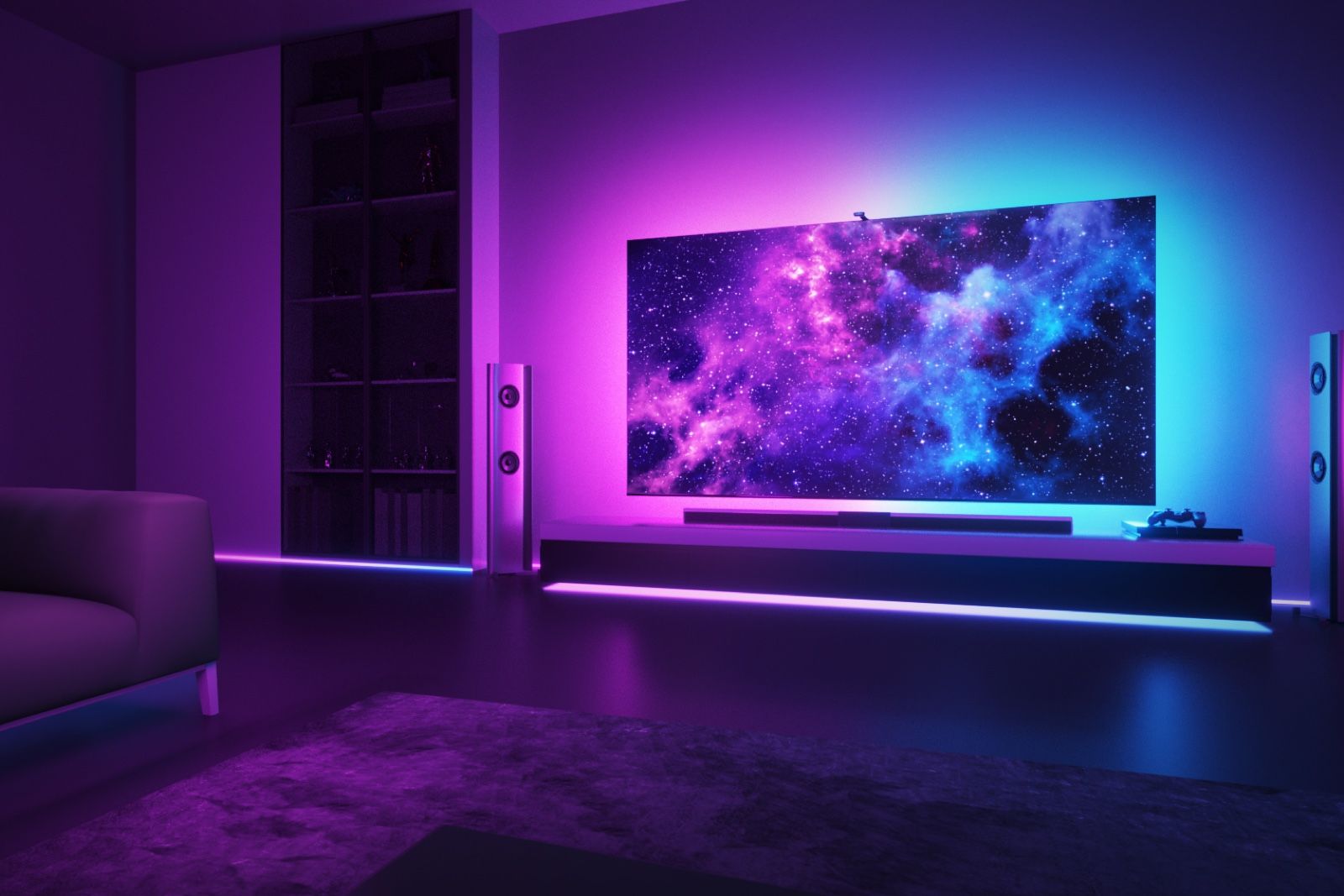
Govee’s TV Backlight T2 brings the ambiance to movie night
The new dual-camera device can match the colours of your content and project them onto the wall behind, for a more immersive viewing experience.
Backlighting is a great way to achieve this contrast. A light behind the screen, preferably to a temperature of 6,500K, will alter your perception of brightness and contrast. I personally enjoy strip lighting surrounding the wall behind my TV to serve as bias lighting. Smart strip lights in particular not only allow you to change the color and brightness, but also feature pre-programmed sequences to complement the viewing experience. That means it can help with content that is harder to see, but it can also liven up more mundane stories.
3 Tinker with settings
But don’t overdo it
Warner Bros. Pictures
One of the ways you can slightly improve your picture is by looking at the basic settings of brightness, color and contrast. Adjusting these levels won’t make sweeping changes, but they can still be helpful and are a good place to start. It’s important not to deviate too far from the median. Turning any of these up or down too far will dramatically undercut the image, so avoid taking extremes in either direction, especially when it comes to brightness.
Gamma influences brightness and contrast by adjusting shadows on screen: a setting of 2.0 or lower will help with dark content.
Depending on the TV, there may be some advanced settings worth exploring. Gamma influences brightness and contrast by adjusting shadows on screen: a setting of 2.0 or lower will help with dark content. In some cases, you can turn up the backlighting, which will improve brightness. It’s likely the TV manufacturer has a guide on its website to help you make adjustments to achieve the optimal look.
Be warned, it’s easy to go down a rabbit hole playing around with settings. For those who really want to achieve the best, most faithful image possible, there are guides on YouTube that will walk you through changing the settings using control imagery to test against it. You can also invest in a setup disc, such as Spears & Munsil UHD HDR Benchmark, to calibrate your TV.
4 Embrace (most) smart TV features
Get rid of the soap opera effect
Samsung
Newer Sony, Samsung and LG Smart TVs all boast similar features that more or less do the same thing: embrace the director’s vision. This is an easy way to automatically adjust a variety of settings in order to achieve a faithful recreation of the image, provided the director had a distinct vision to begin with.

5 Google TV tips and tricks to enhance your smart TV experience
With a few of our favorite settings and features, you can quickly elevate your Google TV and streaming experience.
These newer features also usually turn off the dreaded soap opera effect, which creates an uncanny, eerie feel to many films and scripted TV shows. Each TV brand has its own term for such motion technology, but whatever they call it, it should be turned off.
5 Check the source
Align content, cables and screens
Patrick Campanale / Unsplash
Compression is a problem that can lead to poor image quality, which will be more noticeable when the screen is dark. You want to be sure that all components of the viewing train are compatible and optimal, from the content itself to the screen you’re watching on and any cables or consoles in between.
For example, while a 4K TV can offer an impressive image, it becomes less impressive if what you’re watching is from a file on your laptop that you’ve connected to your TV. Similarly, that Netflix 4K tier subscription is likely worth the investment for all their detailed and colorful 4K content, but you want to make sure you’ve fast internet and a suitable TV.
6 Invest in OLED
Worth the price
LG
The best way to make those darker scenes appear better is to simply buy a better TV, and that’s almost certainly going to be an OLED TV. OLED TVs are the best way to consistently enjoy content that’s literally dark. Initially championed by LG, Sony and Samsung recently joined in on producing OLED TVs simply because these screens are so good at creating contrast between dark colors and deep blacks.
That’s because OLED screens feature individual pixels that are self-lit. They can also each turn off, which means that at any point when the pixel on screen needs to be black, it can turn completely black. LED screens can’t do that.
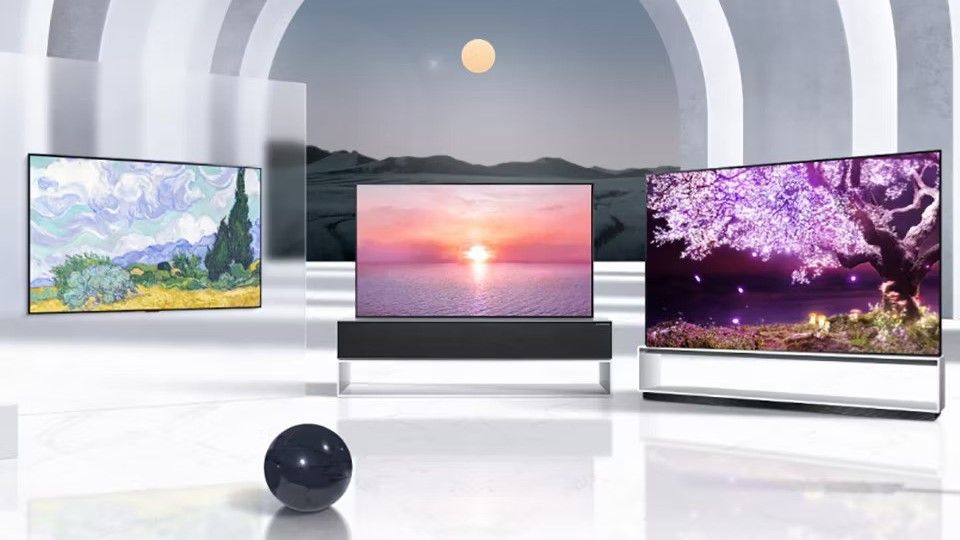
OLED vs QD-OLED vs Mini LED vs MicroLED: Different TV techs explained
TV jargon and acronyms can be confusing, but each has their own unique viewing benefits. We break them down.
LED screens are back lit and struggle to varying degrees to achieve the truest black simply because each pixel isn’t controlled individually. LED screens use local dimming to achieve darkness on screen, but since they can’t completely turn off, some light is still apparent, which keeps dark content on screen a little blurry. There are advances in LED technology that come closer to achieving the quality of OLED TVs, such as mini-LED screens that decrease the size of the backlight. While it is a marked improvement, it’s still not OLED-level darkness and contrast.
For better or worse, light content isn’t going away. If you’re going to take time to enjoy your favorite films and shows, it’s important to take time beforehand to optimize the viewing experience. Or else you’ll be left out in the dark.
Trending Products

Cooler Master MasterBox Q300L Micro-ATX Tower with Magnetic Design Dust Filter, Transparent Acrylic Side Panel…

ASUS TUF Gaming GT301 ZAKU II Edition ATX mid-Tower Compact case with Tempered Glass Side Panel, Honeycomb Front Panel…

ASUS TUF Gaming GT501 Mid-Tower Computer Case for up to EATX Motherboards with USB 3.0 Front Panel Cases GT501/GRY/WITH…

be quiet! Pure Base 500DX Black, Mid Tower ATX case, ARGB, 3 pre-installed Pure Wings 2, BGW37, tempered glass window

ASUS ROG Strix Helios GX601 White Edition RGB Mid-Tower Computer Case for ATX/EATX Motherboards with tempered glass…


